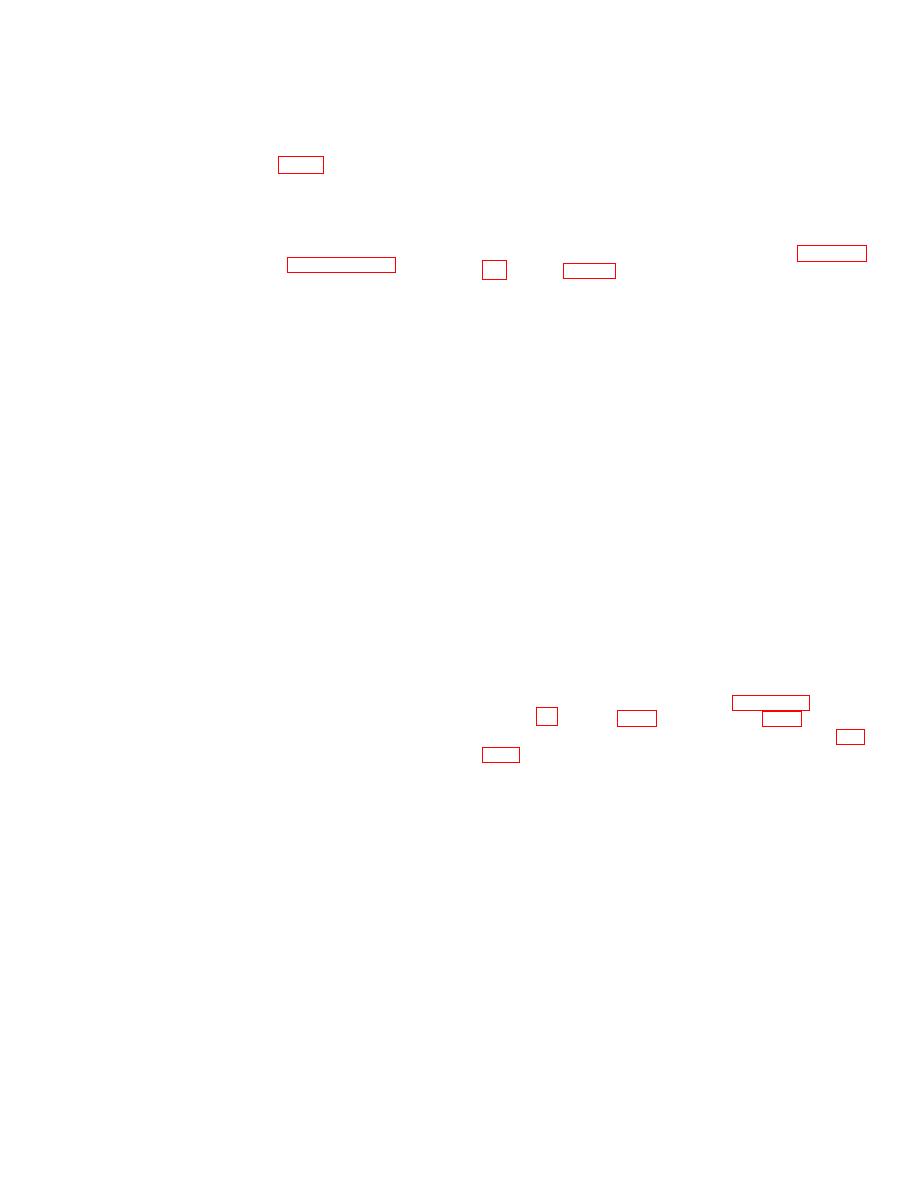 |
|||
|
|
|||
|
Page Title:
Universal Digital Patch Panel, Programs |
|
||
| ||||||||||
|
|
 TM 11-5895-878-14&P
Below the connectors are 24 program modules. Between
(6) The signal common "ring" lead of an
the connectors and program boards there is a jack set ID
interrupted signal is never left open. It may be supplied
strip indicating the jack set associated with each program
DC ground or another program elected termination.
aboard.
2-11. Universal Digital Patch Panel, Programs
connected (through a flexible printed circuit board) to a
a. General.
There are 17 different program
program board. The board is programmed by a program
modules provided to be used with the patch panel. The
module (containing jumpers) to set up an operation circuit.
modules are identified as PROGRAM MODULE
The functions that may be performed by the circuits are
ASSEMBLY LBAD-D-52724 GP-1 through GP-17. The
given in (1) through (6) below. The actual circuits for which
circuit configuration for each group is shown in figures 2-
modules are available are given in paragraph 2-11.
(1) Provides a normal through path for digital
functions are given in b through r below. The function of
signals when no patches are made.
each group module is as follows:
(2) When patching in a replacement sending
Group No.
Function
device, the patching configuration will terminate the
1
Red Receive
interrupted sending equipment in an impedance equal to the
2
Red Send
input impedance of the receiving device.
3
Red Control
4
Black Send
(3) When patching in a replacement receiving
5
Black Receive
device the patching configuration will hold the interrupted
6
High Level Send
receiving equipment with a holding voltage or current equal
7
High Level Receive
to the mark voltage or current transmitted by the sending
8
Low Level Send W/Timing From External
device.
Standard To Both Sender & Data Receiver
(4) The patch panel will perform the above
9 Low Level Send W/Timing From Data Receiver
functions for all the following types of digital signals:
To Data Sender
(a) Low level 6 VDC send and receive.
10 Low Level Send W/Timing From Data Sender To
(b) Low level 3 VDC send and receive.
Data Receiver
(c) High level polar or neutral send and
11 Low Level Receive W/Timing (Always From Data
receive.
Sender To Data Receiver).
(d) Low level receive with associated
12 Low Level 6 VDC Send
timing.
13 Low Level VDC Receive
14 Low Level Balanced (+3V and -3V) Send.
(e) Low level send with timing from sending
15 Low Level Balanced (3V and -3V) Receive.
to receiving device.
16 Black Send (Modified - Less Station Clock)
(f) Low level send with timing from
17 Black/Red Receive
receiving to sending device.
NOTE
(g) Low level send with timing from an
For terminal identification figures 2-
external standard to both sending and receiving devices.
(5) The patch panel also incorporates a special
function for those circuits utilizing either an external timing
standard or timing from a receiving device to a sending
(1) This programming module connects the
device. When a transmitted signal is to be patched back to
following terminals:
the receiving portion of the same equipment for testing
B2 to E1
purposes, a problem would normally arise. Since external
B1 to J3
timing is necessarily introduced on the line side of a jack
C1 to F3
field, a line-send-to-line-receive (back to back line) patch
B3 to J1
required to perform the above test for equipment external to
D2 to K3
the TCF contains two timing signals (one injected into the
L1 to J1
send field and one received on the incoming line).
F2 to F3
Conversely, an equipment send-to-equipment-receive (back
M3 to J3
to back equip) patch required to perform the test for
H3 to El
equipment internal to the TCF contains no timing signal.
(2) When a patch cord plug is inserted into
When timing is sent from a receiving device to a sending
the LINE jack, the following connections are made.
device the same problem can occur (i.e., two timing signals
Terminal
Termination
on a back to back line and none on a back to back equip). A
T
To TCF plugged equipment
push button "back-to-back" switch allows the removal of one
R
To TCF plugged equipment
of the two timing signals present in a back to back line patch
T1
Unterminated
and the introduction of timing in a back-to-back equip patch.
R1
Unterminated
An indicator light as well as switch position indicates the
(3) When a patch cord plug is inserted into
activation of this function in all cases.
the EQUIP jack, the following connections are made.
2-23
|
|
Privacy Statement - Press Release - Copyright Information. - Contact Us |